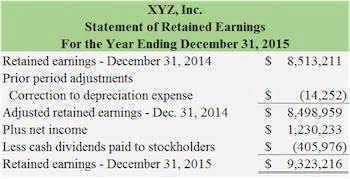
A total of $560 million in selling and operating expenses, and $293 million in general and administrative expenses, were subtracted from that profit, leaving an operating income of $765 million. To this, additional gains were added and losses were subtracted, including $257 million in income tax. This type of analysis makes it simple to compare financial statements across periods and industries, and between companies, because you can see relative proportions. It also helps you analyze whether performance metrics are improving. Vertical analysis refers to the method of financial analysis where each line item is listed as a percentage of a base figure within the statement. This means line items on income statements are stated in percentages of gross sales, instead of in exact amounts of money, such as dollars.

Amanda Bellucco-Chatham is an editor, writer, and fact-checker with years of experience researching personal finance topics. Specialties include general financial planning, career development, lending, retirement, tax preparation, and credit. Shaun Conrad is a Certified Public Accountant and CPA exam expert with a passion for teaching.
Expansion of the Type of Qualified Services an Organization Can Provide Through Implementation of ESL Education Pilot
In other words, an income summary zeros out the balances of income-statement accounts in accounting records for next-period recording, but an income statement reports the balances of income-statement accounts to show current-period performance. Similarly, transferring expenses off the income statement necessitates crediting all expense accounts for the whole amount of expenses incurred during the period and debiting the income summary account. Closing entries prepare a company for the next accounting period by clearing any outstanding balances in certain accounts that should not transfer over to the next period. Closing, or clearing the balances, means returning the account to a zero balance.
I imagine some of you are starting to wonder if there is an end to the types of journal entries in the accounting cycle! So far we have reviewed day-to-day journal entries and adjusting journal entries. The formula for calculating the total retained earnings is revenue minus expenses. In this case, the total retained earnings are listed as credit because the revenue (credited) was more significant than the expenses. To gain a better understanding of what these temporary accounts are, take a look at the following example. Although each application for the 2025 grant year will be given due consideration, the IRS is especially interested in receiving applications from organizations providing services in these underserved geographic areas.
Related AccountingTools Courses
Notice that revenues, expenses, dividends, and income summary all have zero balances. The post-closing T-accounts will be transferred to the post-closing trial balance, which is step 9 in the accounting cycle. You might be asking yourself, “is the Income Summary account even necessary? ” Could we just close out revenues and expenses directly into retained earnings and not have this extra temporary account? We could do this, but by having the Income Summary account, you get a balance for net income a second time. This gives you the balance to compare to the income statement, and allows you to double check that all income statement accounts are closed and have correct amounts.
To further clarify this concept, balances are closed to assure all revenues and expenses are recorded in the proper period and then start over the following period. The revenue and expense accounts should start at zero each period, because we income summary are measuring how much revenue is earned and expenses incurred during the period. However, the cash balances, as well as the other balance sheet accounts, are carried over from the end of a current period to the beginning of the next period.
Step 1: Close the Revenue Accounts
After closing the revenue accounts, the next step in compiling the document is to close all the expense accounts. Expense accounts are always losses or costs, meaning they have debit balances. Companies prepare an income summary and an income statement at the end of an accounting period. The second entry requires expense accounts close to the Income Summary account.
- The first section, titled Revenue, indicates that Microsoft’s gross (annual) profit, or gross margin, for the fiscal year ending June 30, 2021, was $115.86 billion.
- Earnings—the bedrock of business values—are growing soundly once again, and the recession that many predicted would have started by now has yet to emerge.
- Earnings per share are computed by dividing the net income figure by the number of weighted average shares outstanding.
- Start with a free account to explore 20+ always-free courses and hundreds of finance templates and cheat sheets.
If we do not close out the balances in the revenue and expense accounts, these accounts would continue to contain the revenue and expense balances from previous years and would violate the periodicity principle. The income summary account is defined as the account of temporary or provisional in nature wherein the statement at the end of the accounting period net off all the closing entries of expenses and revenue accounts. An income statement’s objective is to compile all of the account information on revenues and expenses recorded during an accounting period and display it in standard income-statement format. An income statement assists users in evaluating a company’s previous performance and offers a foundation for forecasting future success. Information on various components of total net income, as a result of revenues and expenses from various business operations, is especially valuable in estimating the risk of not achieving a specified level of income in the future. A high level of total current income, for example, combined with a relatively low level of income from the major operating activities may imply reduced total income in the future.


